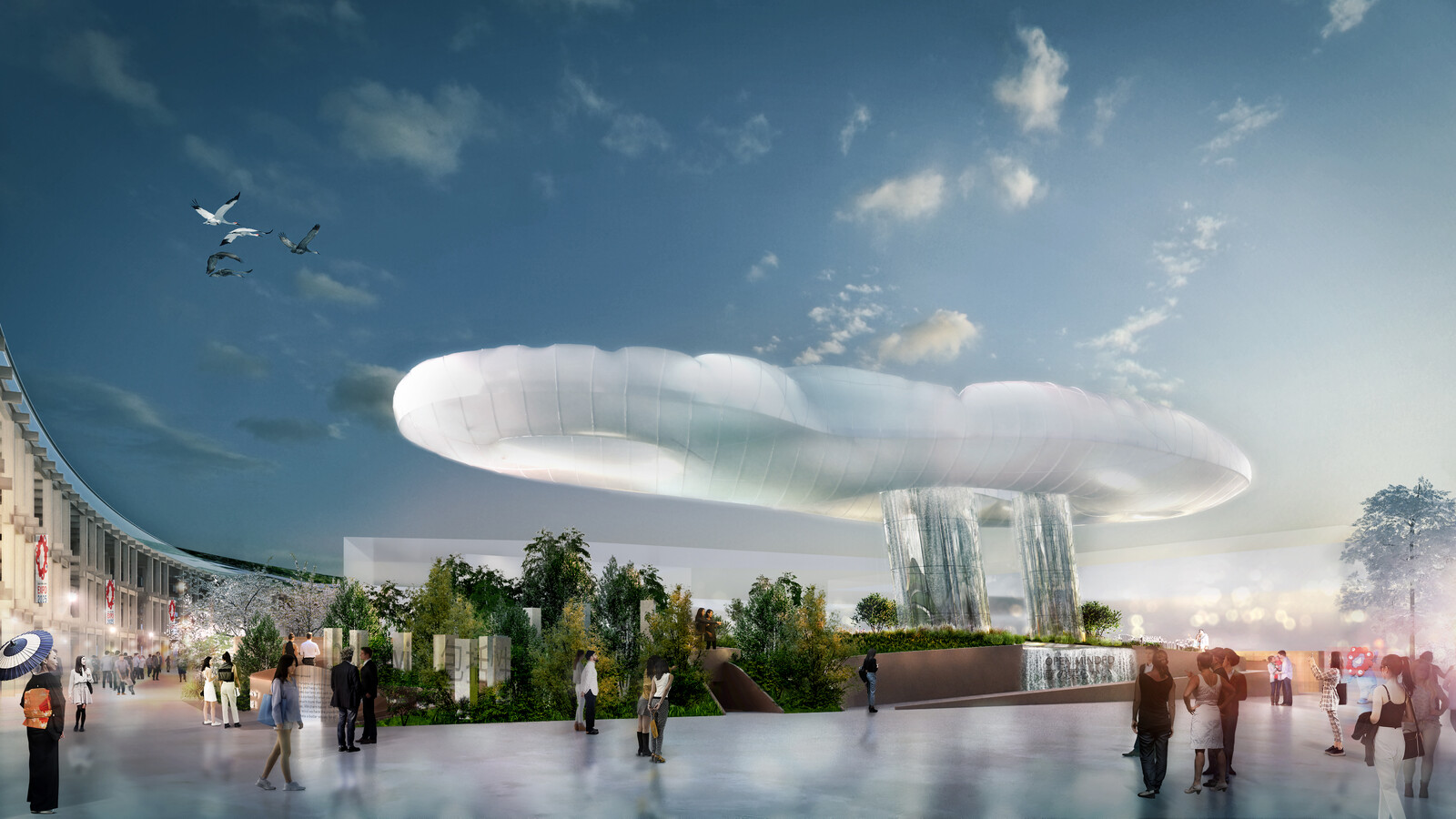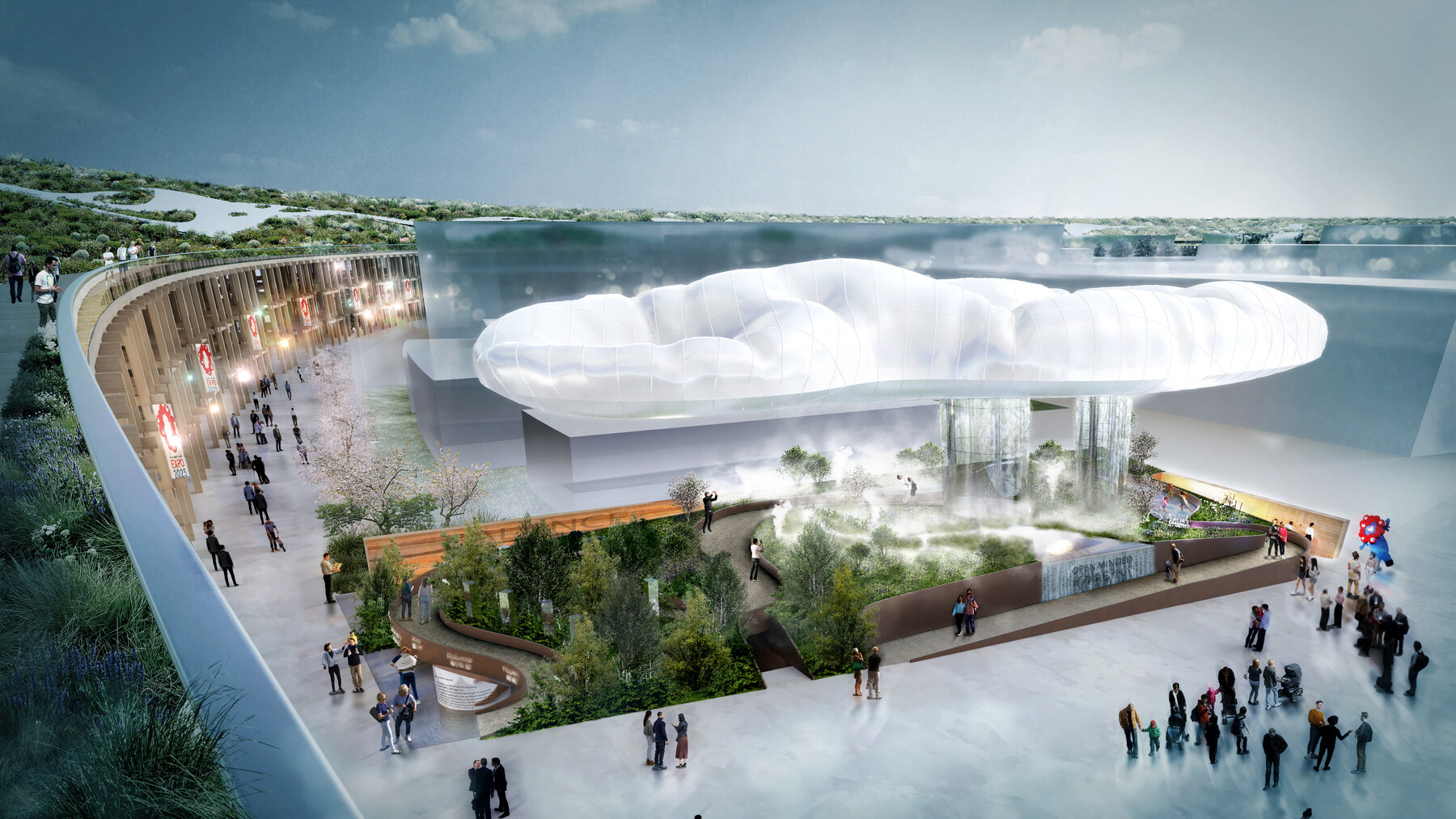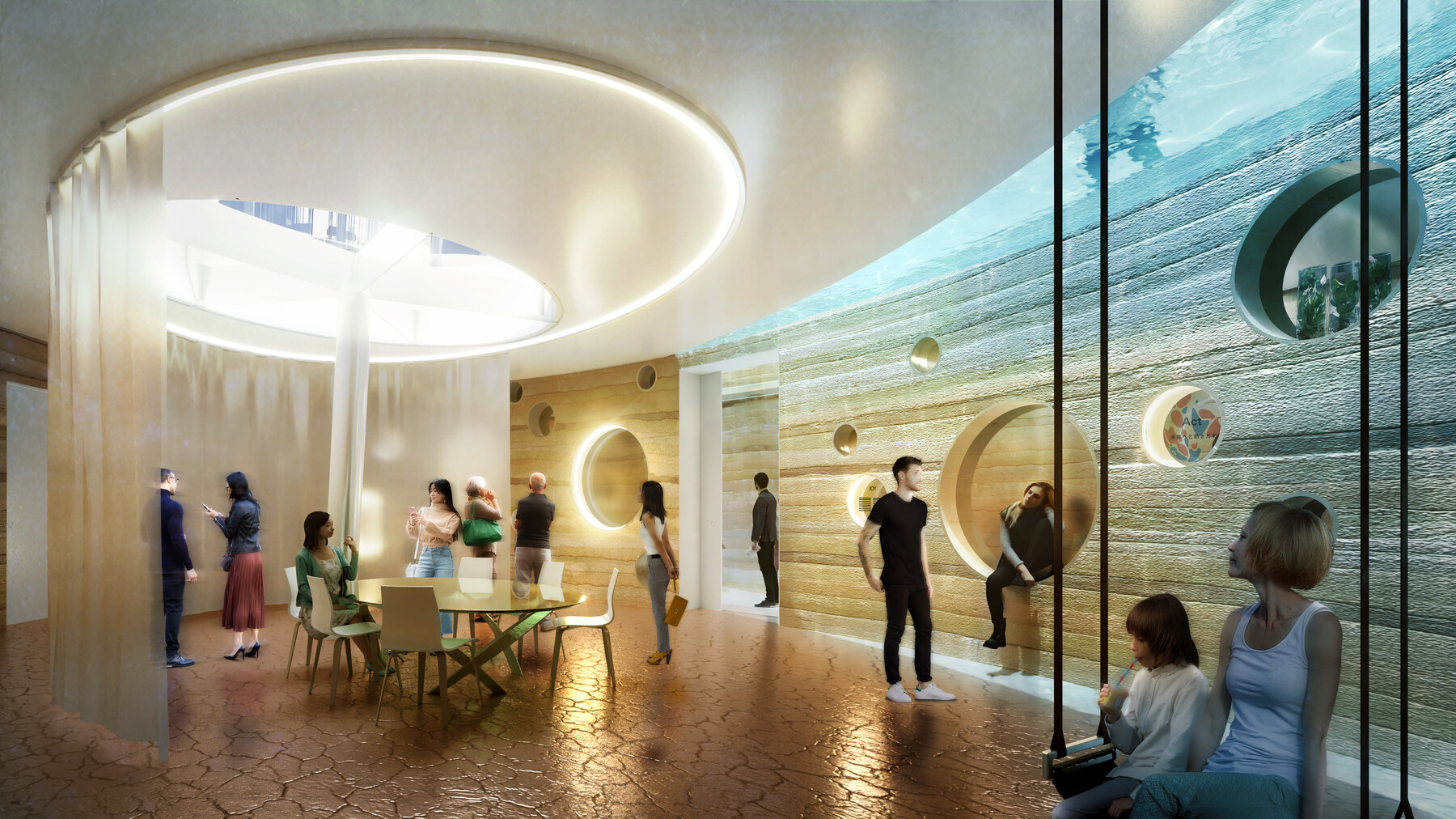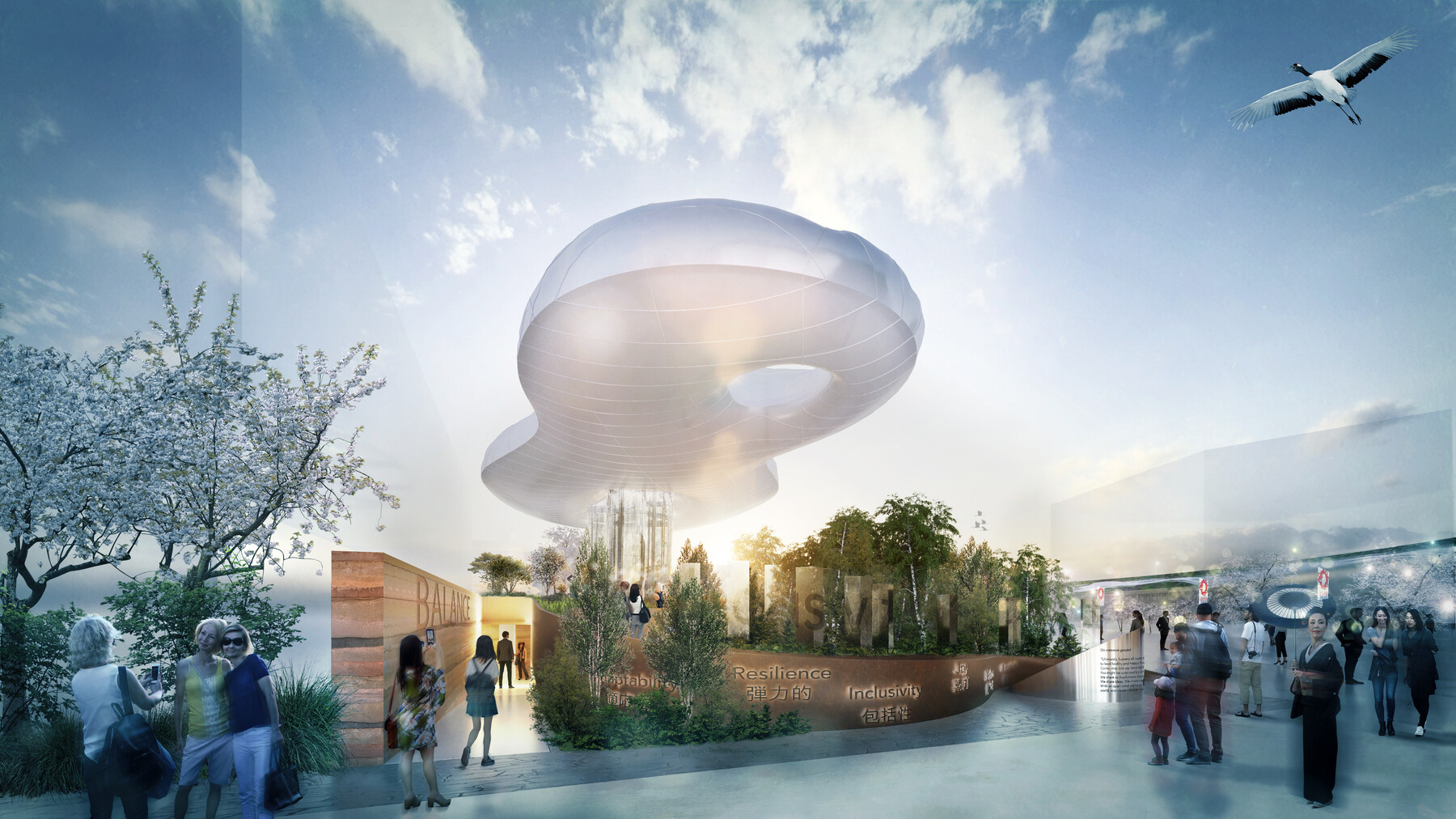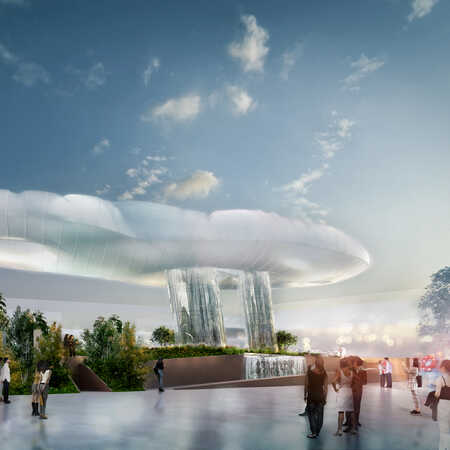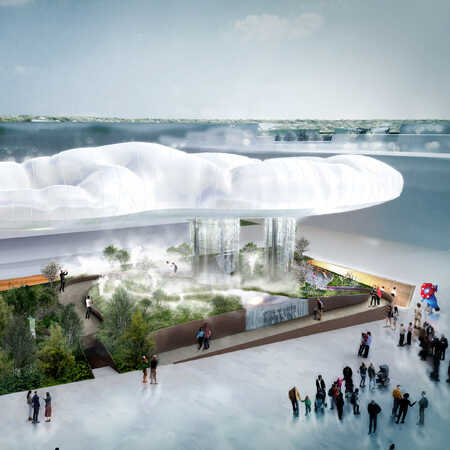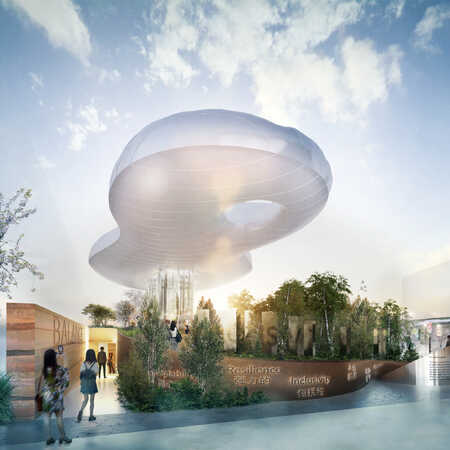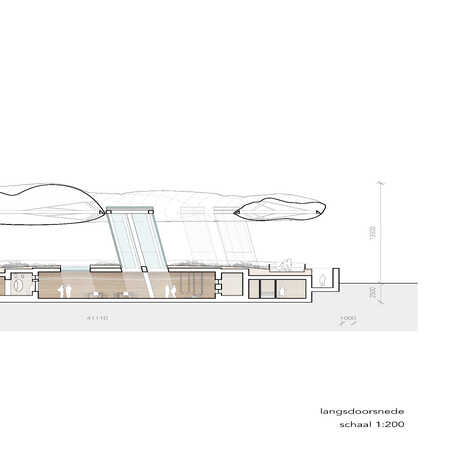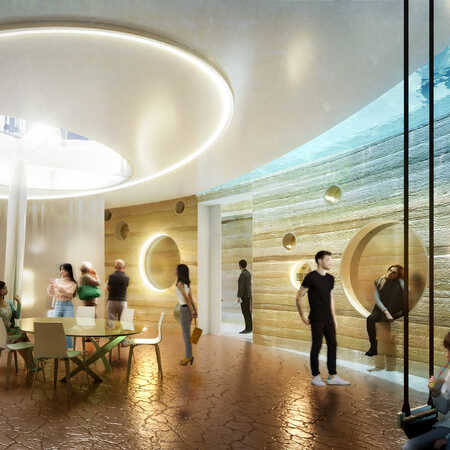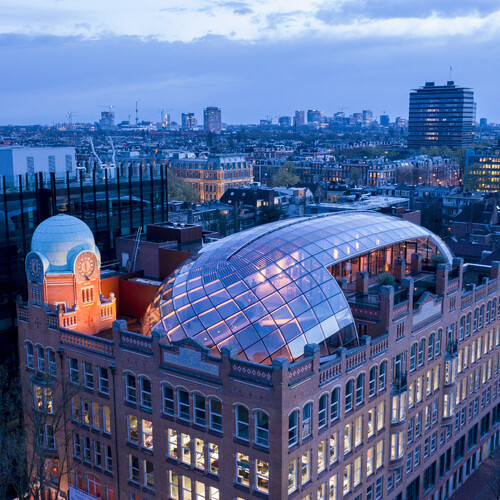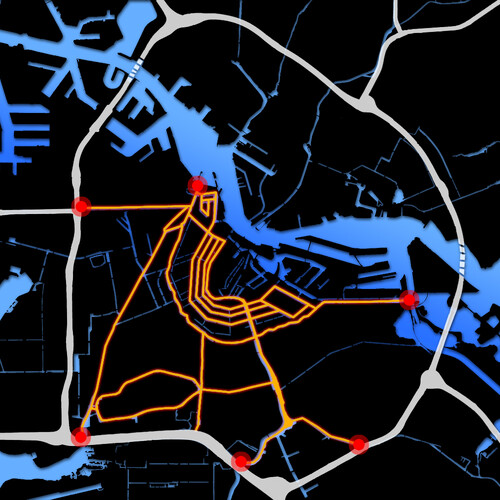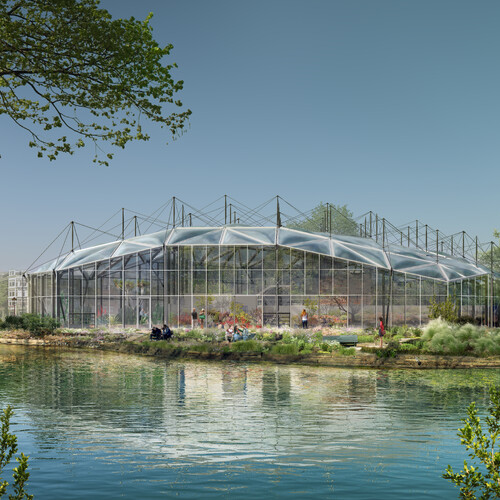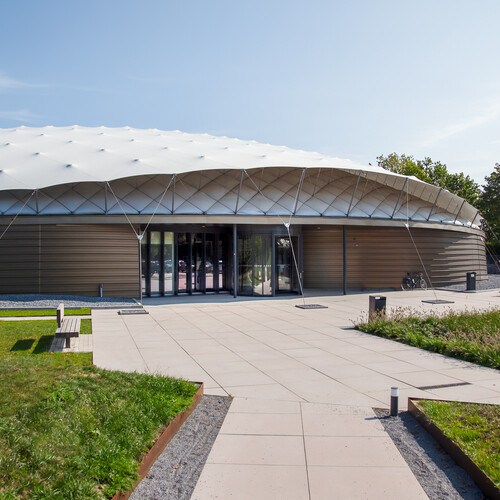Since sustainability, the restoration of nature and healthy living are the overarching themes of the exhibition, ZJA sought a starting point for the design by opting to make it as circular as possible, in other words by minimizing the use of imported building materials. As a logical consequence the decision was made that it might be even better to design not a building but a special place, where visitors could experience the Dutch perspective on the themes of the exhibition, and to create the minimal structure that would still be needed from local materials, using the ground itself to make walls of stamped earth.
The location on the site is exceptional, at the corner of a series of pavilions and a square, with access nearby to the big timber gallery, seventeen metres high, that offers a view out over the exhibition. It is ideal for the creation of a scenic and open effect.
